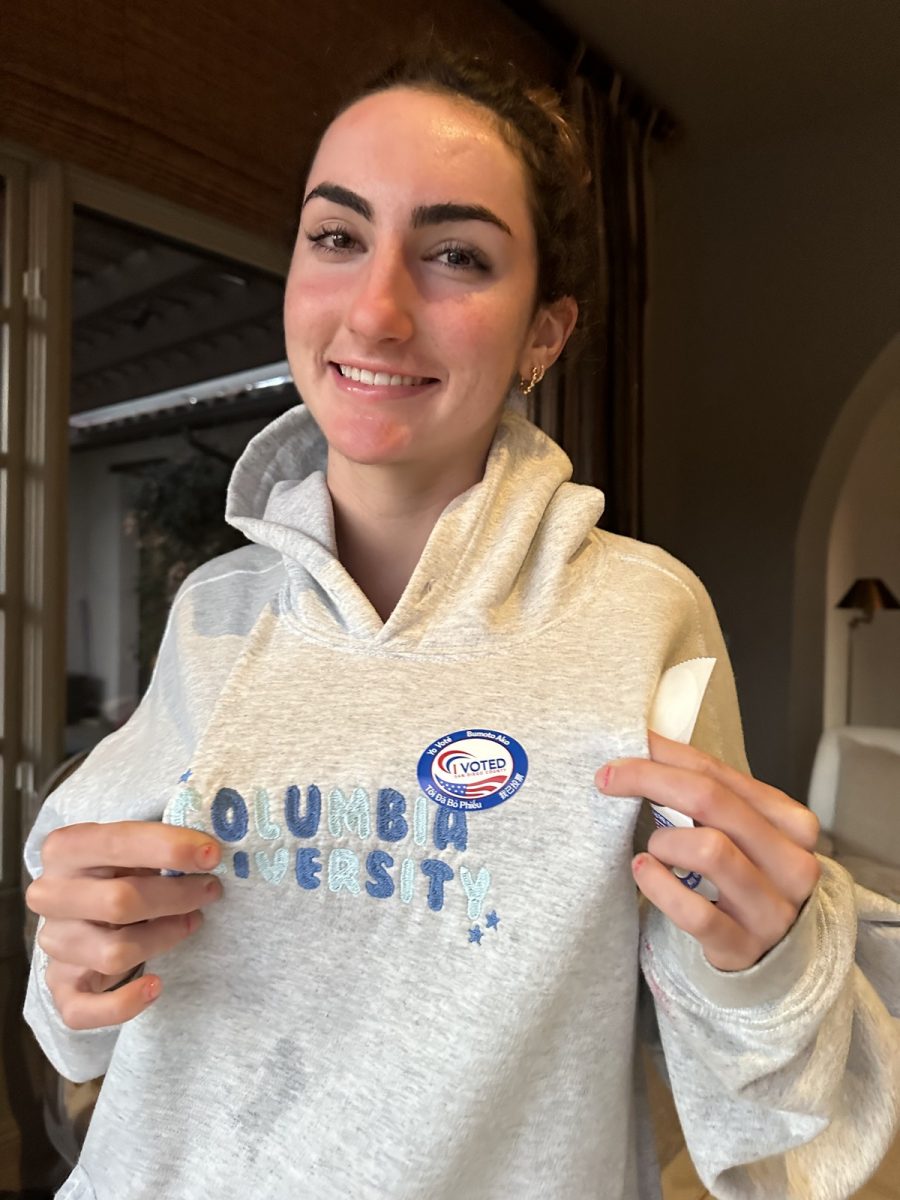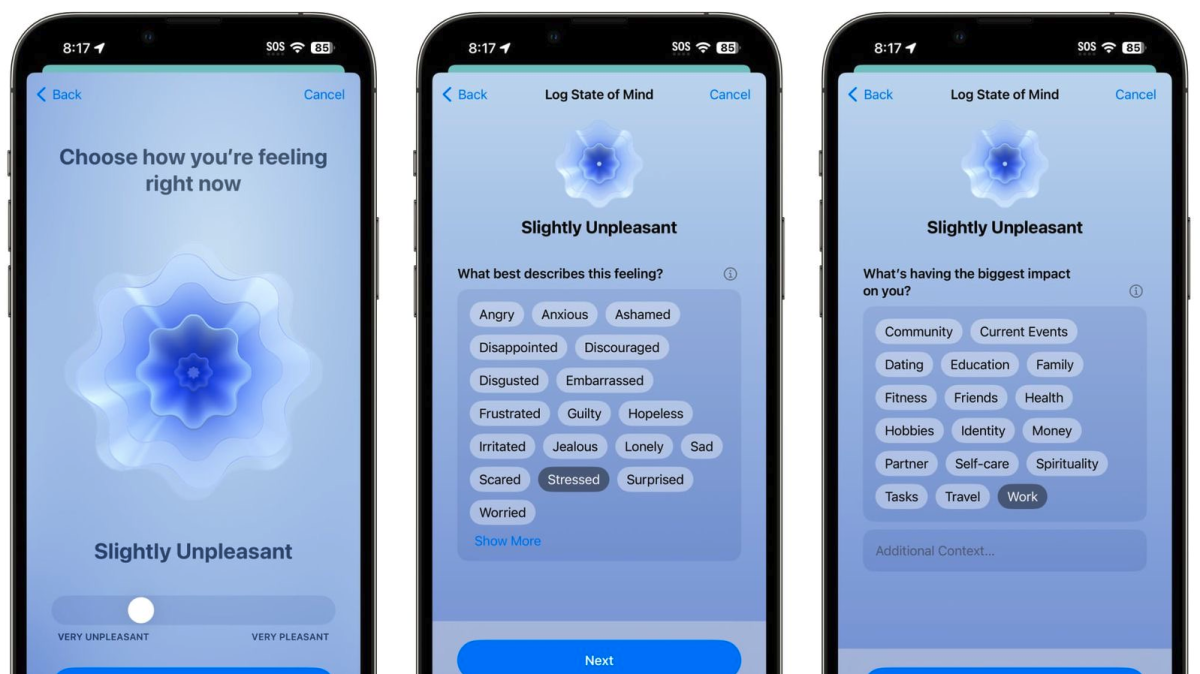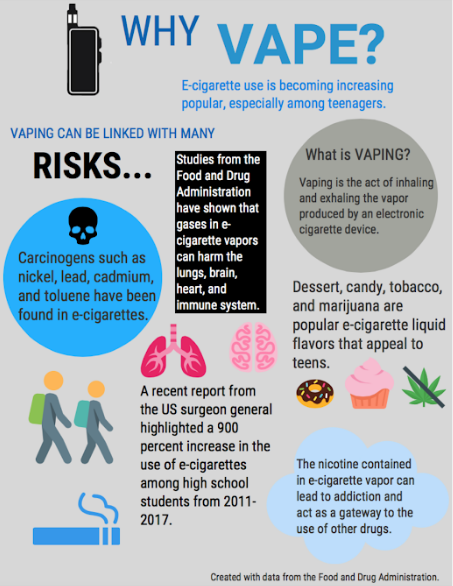Smoky crisis brewing
September 4, 2018
Although e-cigarette manufacturers claim vapes are a product meant for adult smokers, the devices are becoming increasingly popular among high school students, causing health experts to fear their potentially harmful effects and to brand young vape users the experimental “guinea pig” generation.
Many Cathedral Catholic High School students share a widespread sentiment that e-cigarettes are safe.
“As long as someone isn’t harming anyone or putting really harmful substances in the device when they vape, then I think it’s fine,” CCHS student Laila Emamjomeh ‘20 said.
Unfortunately, e-cigarettes are too new to generate conclusive scientific data about their potential long-term health effects, but recent scientific studies are revealing the harm in repetitive e-cigarette use.
Vaping devices imitate tobacco smoking by electronically generating a vapor the user inhales or “vapes.” Although e-cigarettes do not produce the carcinogenic tar found in cigarette smoke, they do contain nicotine that is linked to diabetes, increased heart rate, and increased blood pressure, studies reveal.
Nicotine, the chief component of tobacco and a highly addictive substance, also act as a gateway to other drugs by changing the brain through the release of dopamine and the formation of additional nicotine receptors.
“Vaping is not a harmless activity, and during adolescence the brain is still changing so nicotine use can be extremely harmful,” University of Pennsylvania Comprehensive Smoking Treatment Program Director Dr. Frank Leone said. “Repeated exposure to nicotine changes the core functions of the survival instinct mechanism in the brain, permanently altering impulse control.”
In addition to nicotine, the e-liquid used to flavor e-cigarettes contains the carcinogens cadmium, formaldehyde, lead, and nickel, according to a recent report by the Nicotine and Tobacco Research Journal.
E-liquid also contains propylene glycol, a chemical commonly found in antifreeze, polyurethane cushions, and paints. Researchers from the University of Connecticut found that when ingested in high amounts, propylene glycol is potentially toxic to the kidneys and liver, and it can cause neurological symptoms such as convulsions.
“The companies that sell the devices have propagated a myth that the visible vapor cloud is just water, and it’s not,” Dr. Leone said. “It’s a chemical filled aerosol that gets absorbed by the lungs and can cause problems all on its own.”
Besides potentially damaging to the lung tissue, chemicals found in e-cigarettes cause inflammation that reduces the ability of the lungs to keep out germs.
“When the lining of the lung airways are exposed to particles in the air, either naturally or because we inhaled something on purpose, protective mechanisms begin to kick in to try to minimize the direct harm from that exposure,” Dr. Leone said. “If the exposure occurs repeatedly through an action like vaping, the protective mechanisms can damage the lung which results in swelling that manifests as a cough or mucus production.”
A recent pulmonary study at the Harvard School of Public Health detected the chemical components in 76 percent of tested flavoring fluids used for vaping contained diacetyl, a chemical responsible for a serious lung disease known as Popcorn Lung or bronchiolitis obliterans.
The disease causes coughing, wheezing, and shortness of breath, all common symptoms of persistent vaping, Dr. Leone said.
Despite the damaging health effects of e-cigarettes, vape manufacturers continue to propagate a myth that the devices are a healthy way to enjoy smoking by aiming misleading marketing tactics at a young audience.
According to the Center for Disease Control, a 900 percent increase in e-cigarette use among high school students from the years 2011-2017 is largely due to sweet e-cigarette flavors vaping companies direct toward adolescents and a misrepresentation of nicotine levels in e-cigarette devices.
“Vaping companies purposefully target kids through packaging and by creating flavors like bubblegum, strawberry, and cotton candy,” child psychologist Dr. Hayley Silverman said. “Teens are vulnerable, and it’s easy for them to overlook the danger in vaping products.”
Although the government prohibits the sale of e-cigarettes to people under 18 years old, minors can buy the devices online from companies that neglect to verify the age of their customers.
A recent Journal of the American Medical Association study finds the success rate for underage online purchases of e-cigarettes is 93.7 percent, while 95 percent of e-cigarette deliveries are left at the door without age verification.
“The easy accessibility of e-cigarettes and the tempting advertising vape companies employ could have significant consequences,” Dr. Silverman said. “An entire generation is being influenced toward these devices with a high probability for nicotine and chemical addiction.”
Although evidence about the unhealthy impact of e-cigarettes continues to circulate, many teenagers maintain their desire to vape.
“More than a hundred years ago when cigarettes were being introduced to the market, they were considered safe and enjoyable, and it took [more than] 20 years before diseases started accumulating, and before there was enough evidence to convince folks they were harmful,” Dr. Leone said. “I suspect we will face a similar pattern with e-cigarettes.
“I hope I’m wrong about that.”






























































